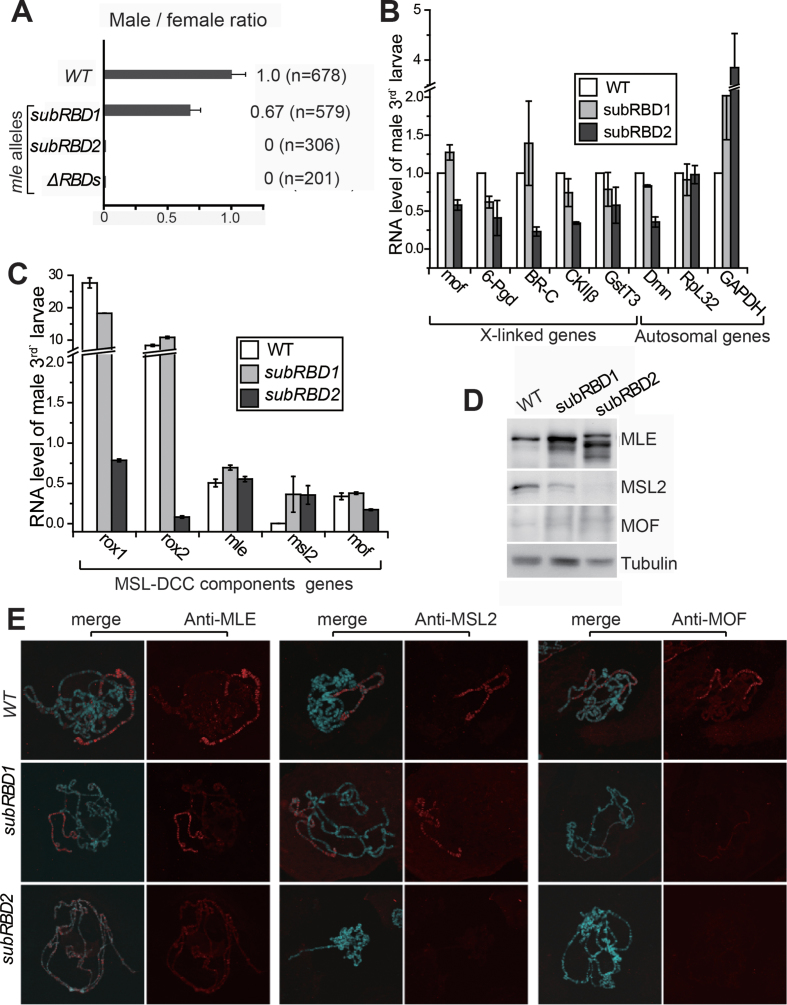Figure 5.
Structure-based mutations in mle dsRBDs result in male lethality and disrupt dosage compensation to different extents. (A) A weaker RNA affinity of MLE was linked to decreased viability in male flies. The ratio of males/females for each mutant compared with that of wild-type was used to describe male viability. (B) qPCR analysis of genes on the X chromosome and on autosomes in male wild-type, mlesubRBD1 and mlesubRBD2 third instar larvae. Error bars are defined as the standard deviation (s.d.) of triplicate experiments. The expression level of each gene was normalized to wild-type and set to 100% for each gene in wild-type. (C) qPCR analysis of MSL-DCC component genes in third instar of wild-type, mlesubRBD1 and mlesubRBD2 larvae. Error bars are defined as the s.d. of triplicate experiments. The expression level of each gene was normalized to the autosomal gene Pka. (D) The levels of the MLE, MSL2 and MOF proteins in male wild-type, mlesubRBD1 and mlesubRBD2 third instar larvae. (E) Localization of the MSL-DCC components on the polytene chromosomal spreads of male third instar larvae carrying the wild-type and mle mutant alleles. Confocal images of immunostaining for MLE, MSL2 and MOF visualized using an Alexa Fluor 594-conjugated secondary antibody (red) and DNA counterstaining with DAPI are shown.

